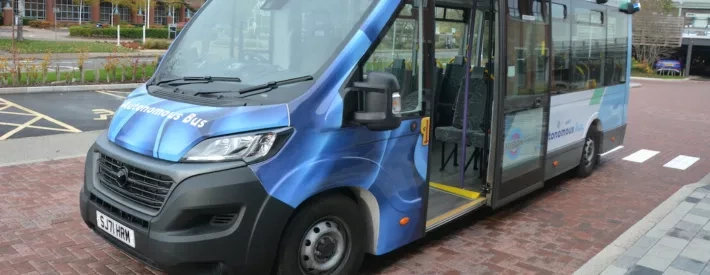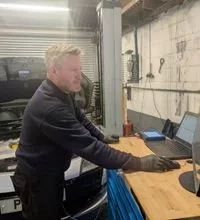How buses are going autonomous

John Birtwistle, Head of Policy at First Bus, gives MotorPro the lowdown on the groundbreaking Mi-Link project – the UK's first ever fully electric autonomous bus service – and what it means for public transportation.
How did the Mi-Link project come about?
Partially funded by Innovate UK and the Centre for Connected and Autonomous Vehicles (CCAV), Mi-Link was the culmination of five years work by a consortium including Fusion Processing and Oxfordshire County Council.
The aim at the outset was to determine whether the concept of autonomous vehicles could be applied to public transport in real-world scenarios, carrying the public in exactly the same way as we would with a conventional bus.
The first route ran around the Milton Park business park [in Oxfordshire], a little circular service just to prove the concept. The second route linked that to Didcot Parkway railway station, including autonomous running on a 40mph section of road in normal traffic.
What were the key findings?
The technology worked very well. It was able to cope with junctions, roundabouts and to keep up with general traffic. Initially it did occasionally display a little hesitancy, but that performance improved throughout the trial.
Just as important, the passengers liked it. Our project partner The University of the West of England did a lot of research to determine their reactions. The presence of the safety driver was key, not necessarily for vehicle-related reasons but for other factors such as personal security.
In terms of negatives, probably the top one was our discovery that there was a greater need for infrastructure maintenance than we expected. We knew before we started that the white lines on the roads had to be clear and visible.
What we hadn’t accounted for was the need for roadside vegetation to be kept in such close check. Particularly when it got windy, the vehicles sometimes interpreted bushes moving around as a potential hazard.
How challenging was it to meet the regulatory requirements?
We were pioneering all this in the UK, which was quite daunting. That fact it went so smoothly was due to a collaborative process involving the whole Department for Transport – not just CCAV but the DVSA, the DVLA, and the Traffic Commissioner, Kevin Rooney.
We had to produce safety cases for the vehicles, and operational safety cases for the different routes. At the outset, this was largely a self-approval process, but during the project the requirements changed to include an independent safety case review. That was an additional complication, but actually it provided great reassurance. There was very little we had to change so it was satisfying to know we’d got the big calls right.
How do you see the future for electric and autonomous buses in the UK?
With the AV Act opening the door to more widespread use, the most significant hurdle is now financial. For the foreseeable future we will continue to see a safety driver on every vehicle. The legislation currently requires a human behind the wheel, to provide assistance to people with disabilities, so our operational costs remain the same.
However, the cost of the vehicles and depreciation are major issues. They are effectively prototypes with a lot of very expensive extra tech. Until that’s productionised, you’re going to find it very difficult to commercialise without some form of grant funding.
More immediate applications include depot operations, where an awful lot of time, money and effort goes into shunting vehicles between cleaning, fuelling and repair. Increasingly, it is recharging rather than fuel, so if we can use autonomy to hook vehicles up to a pantograph or an inductive charging system, there are potentially quite big savings there.
The clean fuel aspect is important as First Bus will completely decarbonise the services we operate for the public by 2035. 14% of our vehicles are already zero emission, and, although we’ve dabbled in hydrogen, we were only ever going to pick EVs for Mi-Link.




